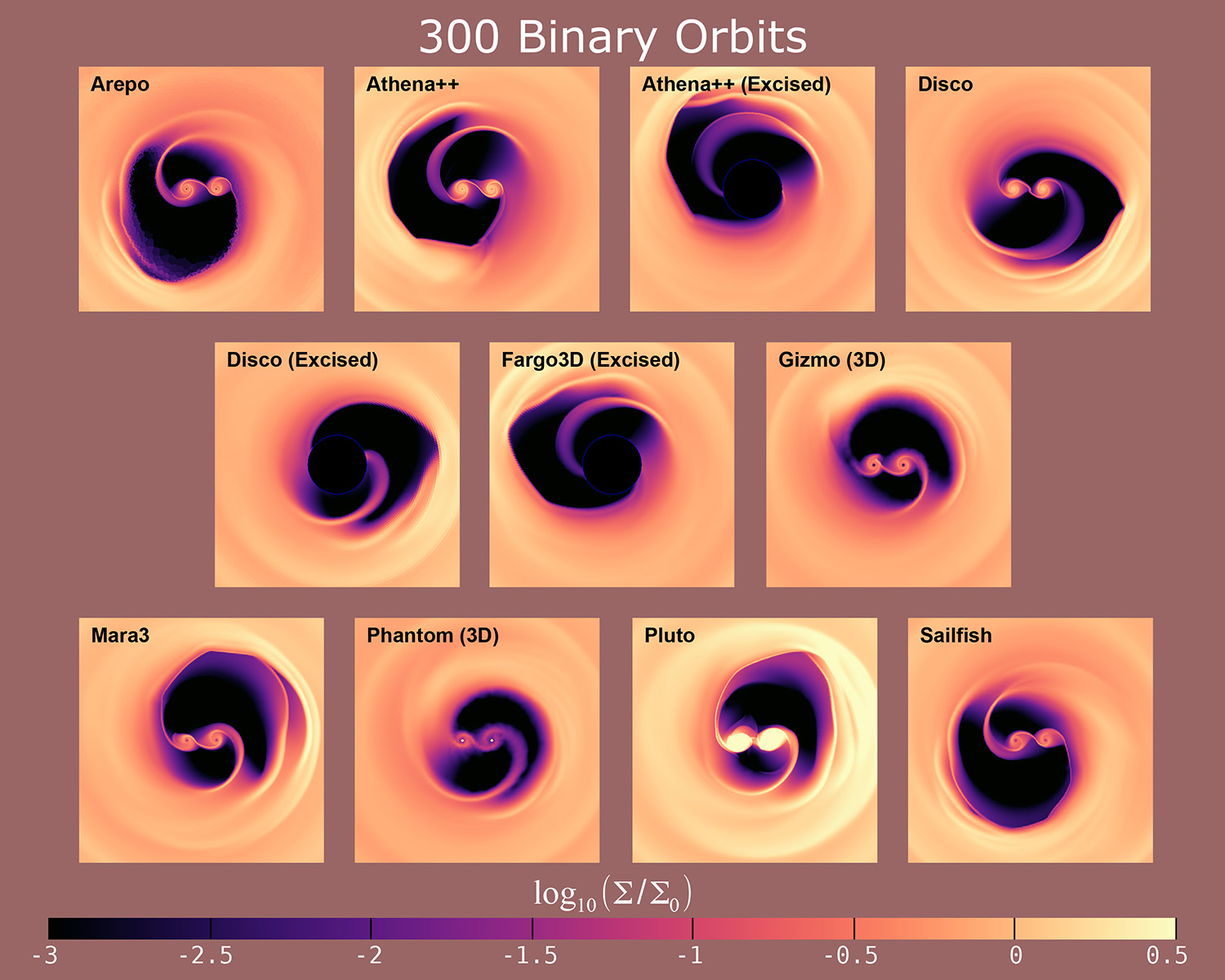The Hydrodynamics Research Repository (HRR)
This is a data repository maintained by the Duffell group, for the purpose of storing long-term data in a way that is publicly accessible.The Santa Barbara Binary-Disk Code Comparison Project
In the Spring of 2022 a large number of numericists, developers, and astrophysicists met at the KITP program "Bridging the Gap", to discuss binary-disk interactions. There we developed a "minimal binary-disk setup" that attempts to capture the essential features of the problem, while making it straightforward for any code to solve.
We ran this problem with eleven different numerical methods, spanning a wide range of techniques. Now the data from all of our codes is publicly available here.
If you are interested in getting started in binary-disk interactions, we highly recommend this resource as a basic code test that you can check your code against.
Density + Velocity at One Orbit
Density + Velocity at Ten Orbits
Density + Velocity at One Hundred Orbits
Density + Velocity at Three Hundred Orbits

The Binary Evolution and Light-Curve Library (BELL)
The BELL is an ever-evolving resource of models for binary evolution, accretion, and emission. The idea is for observers and theorists to use these as input into models for binary evolution and as templates for binary light curves. We will make our data available upon publication.
Binary Accretion templates for equal-mass systems:

1D Gap Models for Planet-Disk Interactions
When a sufficiently massive planet is embedded in a gaseous disk, that planet carves out a low-density annulus in the disk, also known as a "gap". Gaps are important for a number of reasons; they might change the torques and accretion experienced by the planet, but more importantly, gaps can be directly observed. In particular, the Atacama Large Millimeter Array (ALMA) has generated very detailed, resolved images of protoplanetary disks with distinct gap-like features. This provides a potential means of discovering exoplanets during the formation process.
This motivates a complete theory of gap-opening by planets; that is, given a planet mass, local disk temperature, and viscosity, what is the surface density of the gas as a function of radius?
We have precisely such a model, available on our GitHub!
